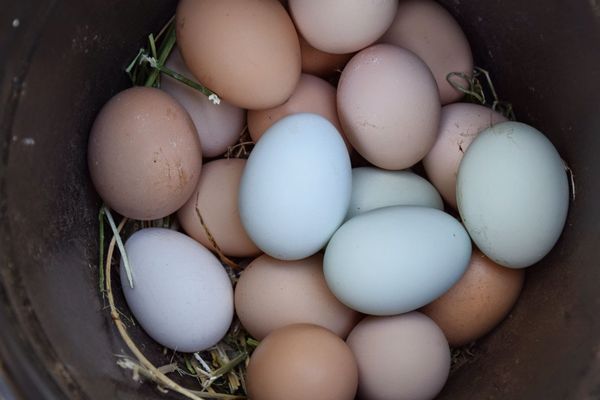Harvest an animal product
Collect clean eggs from a backyard hen coop with adult supervision, inspect, count, and learn basic care and safety while handling hens gently.



Step-by-step guide to collect clean eggs from a backyard hen coop
Where Does Milk Come From? | Milking Cows & Farm Adventures for Kids | Fun Farm Videos
Step 1
Ask an adult to come with you and agree to supervise the egg-collecting time.
Step 2
Wash your hands with soap and water or use hand sanitizer before you go near the coop.
Step 3
Put on closed-toe shoes so your feet stay safe around the coop.
Step 4
Walk calmly to the coop so you do not startle the hens.
Step 5
Open the coop door slowly while the adult watches.
Step 6
Look into each nesting box to spot any eggs hiding in the bedding.
Step 7
Gently move bedding aside with your hand to reveal eggs if you need to.
Step 8
Pick up each egg gently using both hands and hold it steady.
Step 9
Inspect each egg for cracks or dirt by looking it over carefully.
Step 10
Count the eggs and write the number and any notes in your notebook.
Step 11
If an egg is dirty, wipe it gently with a dry cloth or paper towel.
Step 12
Place clean eggs into your basket or egg carton with the pointy end down.
Step 13
Close the coop door carefully when you are finished collecting.
Step 14
Wash your hands with soap and water after handling eggs and hens.
Step 15
Share your finished collection and your notes about the day on DIY.org.
Final steps
You're almost there! Complete all the steps, bring your creation to life, post it, and conquer the challenge!


Help!?
What can we use instead of hand sanitizer, a basket, or a notebook if we don't have them?
Use soap and water for the pre- and post-collection hand washing, a clean plastic tub or Tupperware to hold eggs (pointy end down) instead of a basket or carton, and a phone, scrap paper, or paper towel to record the egg count and notes.
What if the hens get startled or I can't find any eggs when I look in the nesting boxes?
If hens are startled or eggs are hard to spot, stop and let the adult close the door, then return calmly, open the coop door slowly while the adult watches, and gently move the bedding in each nesting box with your hand to reveal hidden eggs.
How should I change the steps for younger children or for older kids who want more challenge?
For younger children have the adult open the coop, handle any hens, and let the child count and gently pick up eggs with both hands, while older kids can more carefully inspect each egg for cracks and dirt, record detailed notes in the notebook, and compare egg sizes or weights.
How can we extend or personalize the egg-collecting activity after we've collected and counted the eggs?
Label and date eggs in your basket or carton, add a chart in your notebook tracking counts and any cracks or dirt, try a float test for freshness, and share photos plus your observations on DIY.org to personalize the project.
Watch videos on how to collect clean eggs from a backyard hen coop
Food from Animals 🥛🍳 | Milk, Eggs, Meat & More | Animal Products Explained for Kids
Facts about backyard poultry care
🤝 Calm, gentle handling and soft voices keep hens relaxed—stressed birds often eat less and lay fewer eggs.
🕒 Collecting eggs daily lowers breakage, stops eggs from getting dirty, and helps prevent hens from learning to eat eggs.
🥚 Most hens lay about one egg every 24–26 hours, but daylight, breed, and season change how often they lay.
🐣 The egg's natural outer coating called the "bloom" helps keep out bacteria—washing removes it, so refrigerated storage practices differ by country.
👩🌾 Egg production varies a lot by breed: some hens lay ~100 eggs a year while top layers can lay 250–300+.
How do I teach my child to collect eggs from a backyard hen coop safely?
What materials do I need to collect and inspect eggs with my child?
What ages is egg collecting suitable for children?
What are the benefits and safety tips of involving children in egg collection?


One subscription, many ways to play and learn.
Only $6.99 after trial. No credit card required



